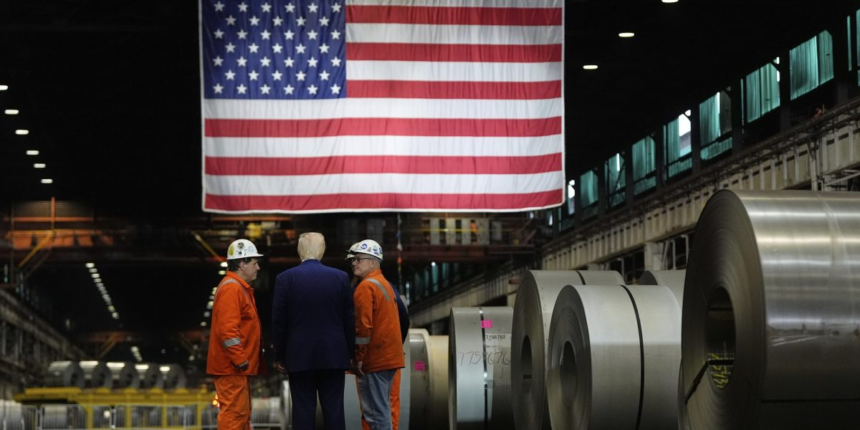“There’s going to be a cash squeeze for a lot of these firms,” said Chris Bangert-Drowns, the researcher at the Washington Center for Equitable Growth who conducted the analysis. Those seemingly small changes at factories with slim profit margins, Bangert-Drowns said, “could lead to stagnation of wages, if not layoffs and closures of plants” if the costs are untenable.
But there’s the possibility of backlash in the form of higher prices and slower growth once tariffs flow more fully through the world economy.
A June survey by the Atlanta Federal Reserve suggested companies would on average pass half of their tariff costs onto U.S. consumers through higher prices. Labor Department data shows America lost 14,000 manufacturing jobs after Trump rolled out his April tariffs, putting a lot of pressure as to whether a rebound starts in the June employment report coming out Friday.
The White House argues American businesses will access new markets because of the trade frameworks, saying companies will ultimately benefit as a result.
“The ‘Made in USA’ label is set to resume its global dominance under President Trump,” White House spokesman Kush Desai said.
But what Bessent didn’t say is U.S. manufacturers are also paying much of that toll.
“We’re getting squeezed from all sides,’’ said Justin Johnson, president of Jordan Manufacturing Co. in Belding, Michigan, northeast of Grand Rapids. His grandfather founded the company in 1949.
Trump has imposed 50% tariffs on imported steel and aluminum. Jordan Manufacturing doesn’t buy foreign steel. But by crippling foreign competition, Trump’s tariffs have allowed domestic U.S. steelmakers to hike prices.
Johnson doesn’t blame them. “There’s no red-blooded capitalist who isn’t going to raise his prices’’ under those circumstances, he said.
The Trump White House insists inflation is not surfacing in the economy, issuing a report through the Council of Economic Advisers this month saying the price of imported goods fell between December of last year and this past May. “These findings contradict claims that tariffs or tariff-fears would lead to an acceleration of inflation,” the report concludes.
Ernie Tedeschi, director of economics at the Budget Lab at Yale University, said that the more accurate measure would be to compare the trends in import prices with themselves in the past and that the CEA’s own numbers show “import prices have accelerated in recent months.”
The latest estimate from the Budget Lab at Yale is the tariffs would cause the average household to have $2,400 less than it would otherwise have.
Josh Smith, founder and president of Montana Knife Co., called himself a Trump voter but said he sees the tariffs on foreign steel and other goods as threatening his business.
For instance, Smith just ordered a $515,000 machine from Germany that grinds his knife blades to a sharp edge. Trump had imposed a 10% tax on products from the EU that is set to rise to 15% under the trade framework he announced Sunday. So Trump’s tax on the machine comes to $77,250 — about enough for Smith to hire an entry-level worker.
Smith would happily buy the bevel-grinding machines from an American supplier. But there aren’t any. “There’s only two companies in the world that make them, and they’re both in Germany,’’ Smith said.
Then there’s imported steel, which Trump is taxing at 50%. Until this year, Montana Knife bought the powdered steel it needs from Crucible Industries in Syracuse, New York. But Crucible declared bankruptcy last December, and its assets were purchased by a Swedish firm, Erasteel, which moved production to Sweden.
Smith beat the tariffs by buying a year’s worth of the steel in advance. But starting in 2026, the specialty steel he’ll be importing from Sweden is set to be hit with a 50% duty.
“The average American is not sitting in the position I am, looking at the numbers I am and making the decisions each day, like, ‘Hey, we cannot hire those extra few people because we might have to pay this tariff on this steel or this tariff on this grinder,’” he said. “I want to buy more equipment and hire more people. That’s what I want to do.”









